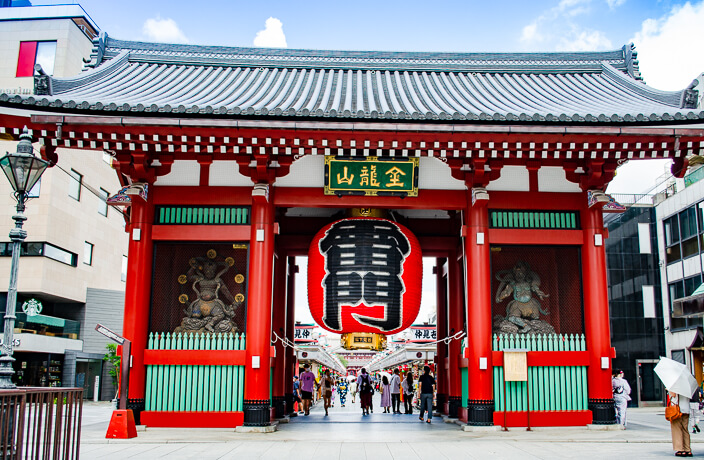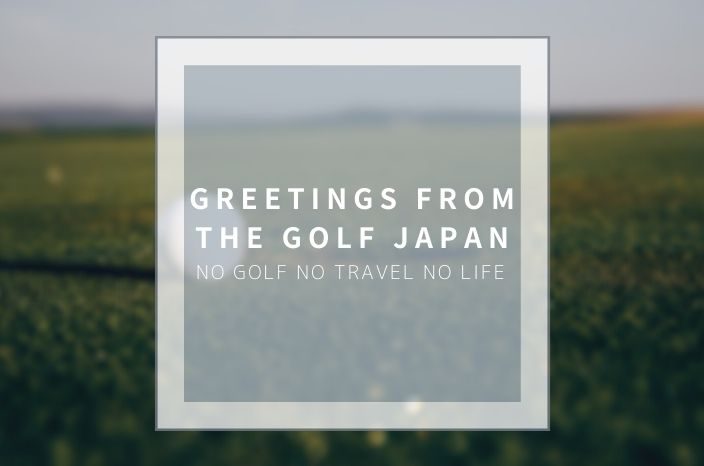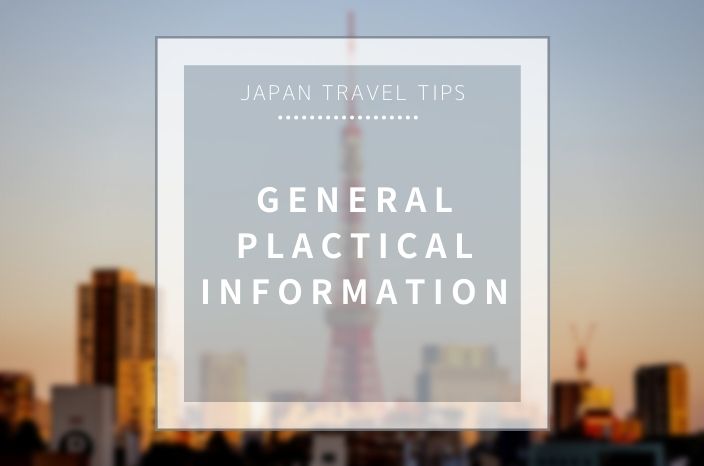If you do a Google image search for “Tokyo Sightseeing,” you will often come across the photos of Sensoji Temple. As it comes at the top of image searches, it has become a popular spot for sightseeing in Tokyo. In this post, we will introduce you to Sensoji Temple and Asakusa, where Sensoji Temple is located.
Sensoji Temple
Sensoji Temple has a history of 1,400 years, and the main deity of the temple is the statue of Kannon.
In the Asuka Period in A.D. 628, the brothers Hinokuma Hamanari and Takenari, who lived along the banks of the present Sumida River, were fishing when they found a statue in their cast net. Not knowing much about Buddha statues, the brothers threw the statue into the water and fished again, but they still kept catching this statue in different places. They didn’t catch any fish, so they decided to take this Buddha statue home instead. When they asked the village headman of what is now Asakusa, to take a look at this statue, it turned out to be the statue of Avalokitesvara Bodhisattva (Sho Kanzeon Bosatsu), also usually Kannon called. So the Kannon statue was enshrined, being said, “If you praise the name and make a wish with all your heart, it will surely grant you merit. This is the root of Sensoji Temple.
This Kannon statue is a secret Buddha and cannot be seen. One night, a monk named Shokai (who restored the Kannon Hall in 645) had a dream in which Kannon appeared to him and told him, “Do not worship without permission.” and It has been preserved to this day.
Speaking of Asakusa, “Kaminarimon-gate” leading to Sensoji Temple is also popular and it is always busy with Japanese and overseas visitors enjoying taking a picture here.
Kaminarimon is the main gate of Sensoji Temple, and its official name is “Fu-Rai-Jin-Mon”. The name comes from the enshrinement of the gods of wind (Fu-jin) and thunder (Rai-jin), which can be seen on either side of the gate. The wind and thunder gods were worshipped to protect the temple from wind and water damage and to protect the temple grounds. At the same time, they were also worshipped to pray for good weather and a good harvest.
The Kaminarimon was first built in 1635, but it has been burned down and rebuilt many times since then. The current one was rebuilt in 1960 with a donation from Konosuke Matsushita (the founder of Panasonic).
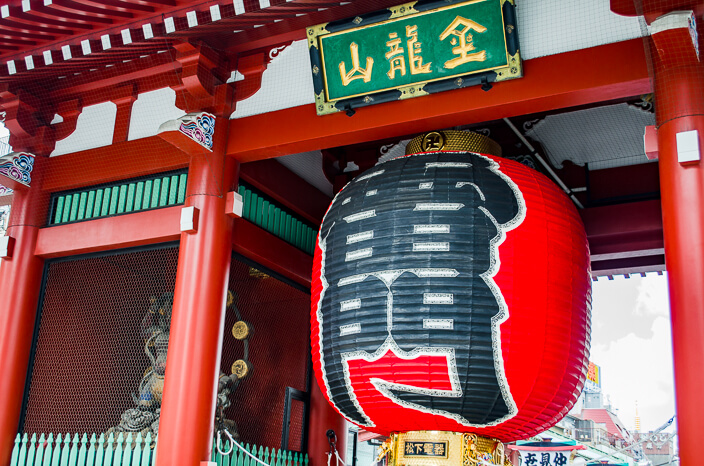
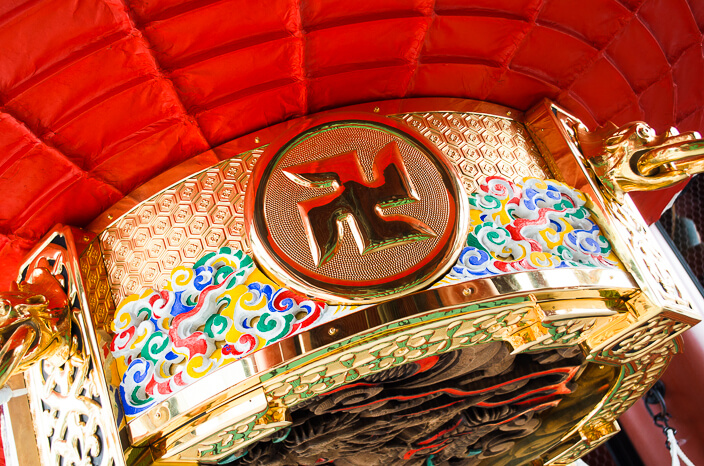
After passing through the Kaminarimon gate, you will find Nakamise, a street lined with stores. There are souvenir shops, rice cracker shops, doll pans, and other shops selling Japanese-style goods, so just window shopping is fun. This street is usually crowded with tourists but at the time of the photo shoot, there were hardly anyone due to COVID-19.
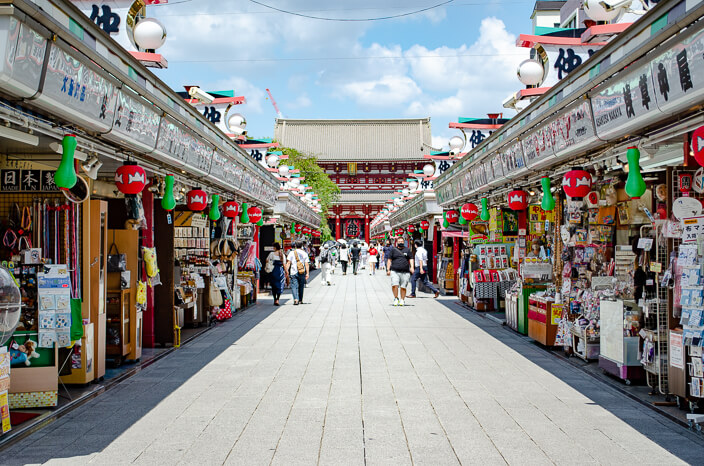
This is the back street of Nakamise. It’s a red shuttered street with store names written on it. Don’t you think it’s kind of tasteful?
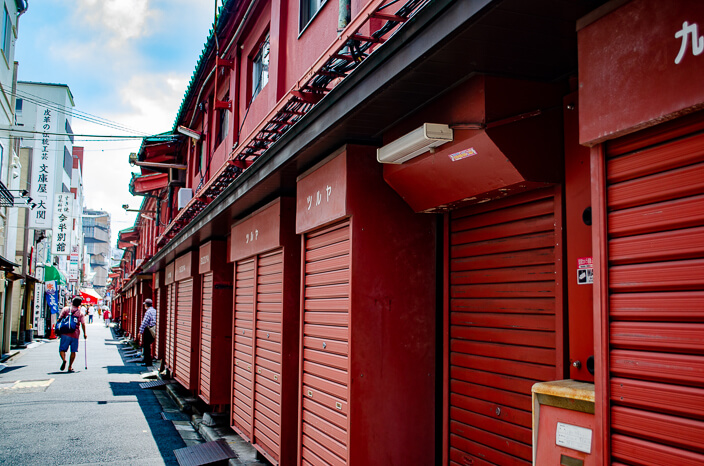
At the end of Nakamise Dori is the Hozomon Gate (Niomon Gate). As it is also called Niomon, there are Nio statues on both sides.
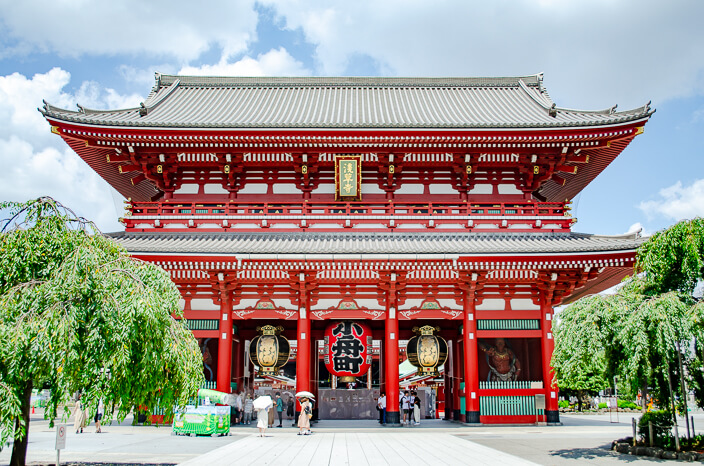
After passing through this gate, you will see the main hall (Kannondo). The silver object in the foreground is the “Jokoro”. It is said that if you pour the smoke from this incense burner over a bad part of your body, it will make it better. I also poured smoke on my head, hoping that my head would get better.
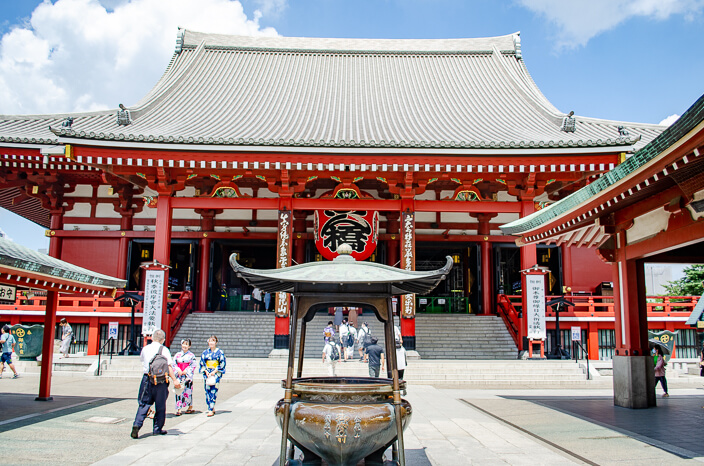
Please purify yourself at the water shed before you go to visit the main hall. Water comes out of the mouth of a dragon in the water shed at Sensoji Temple.
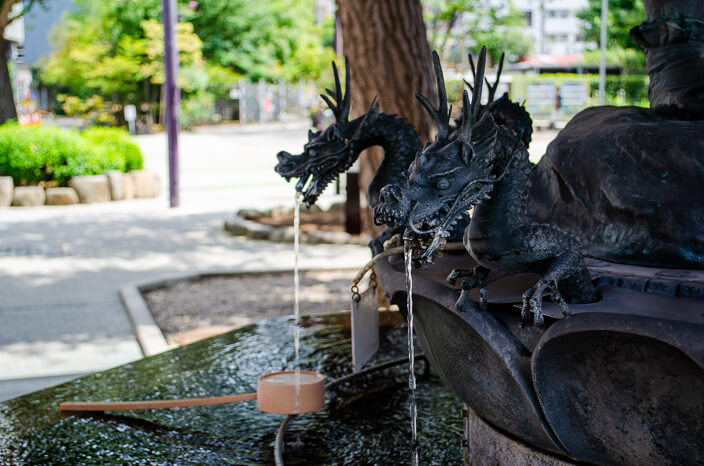
When you come to Sensoji Temple, please try the “omikuji” (fortune telling stick). Put 100 yen in the donation box and shake the omikuji box. The stick that comes out of the box has a number written on it. Open the drawer that matches the number and you will get a fortune.
When it comes to omikuji, “Daikichi (大吉)” is considered to be the best, and “Kyo (凶)” is considered to be the worst. And good luck is always the best, right? However, Sensoji Temple is famous for “omikuji often shows Kyo”. It’s not easy to get a Daikichi here, but why don’t you try your luck?
By the way, my boss got Daikichi on her first visit to the temple in 2021 – How lucky !
In case you get a “Kyo”, there is no need to be discouraged because the most important thing, is to understand what is written in the fortune and to be aware of your actions. Depending on your deeds, a “bad” fortune may turn into a “good” fortune. If you get a “bad luck”, tie the omikuji in a designated place and go home. Then the “bad luck” stays at the Sensoji Temple!
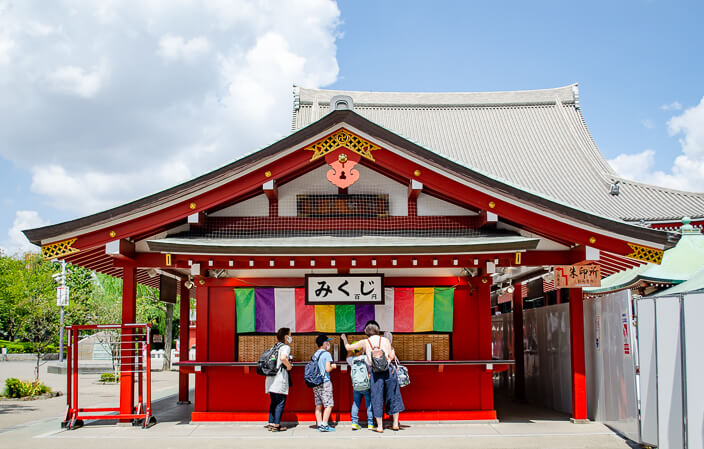
Sensoji Temple
| Address | 2-3-1 Asakusa, Taito-ku, TOKYO |
| TEL | 03-3842-0181 |
| Open Hour | 6:00-17:00 (October-March: 6:30-17:00) |
| Website | https://www.senso-ji.jp/english/ |

